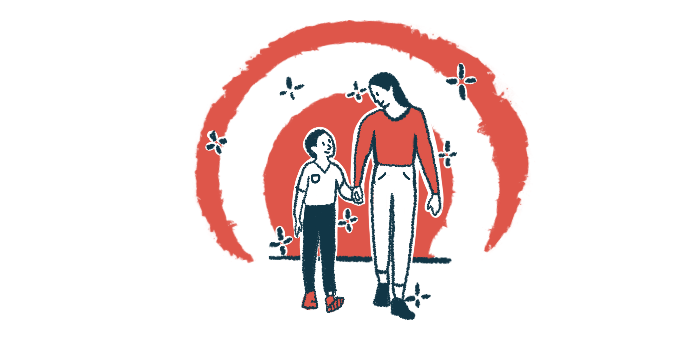European Teens Report High Fabry Burden, Not Fully Lessened by ERT
Written by |

The Fabry disease burden is variable but significant among adolescents and caregivers, affecting their quality of life and mental health, according to results of online surveys in three European countries.
In addition, standard enzyme replacement therapy (ERT) was reported to reduce the disease’s burden, but not fully.
These findings highlight the significant impact of Fabry in teens and the urgent need for new, effective therapies and tailored approaches for each patient and their symptoms, the researchers noted.
The study, “Burden associated with Fabry disease and its treatment in 12–15 year olds: results from a European survey,” was published in the Orphanet Journal of Rare Diseases.
Fabry causes, symptoms, and treatments
Fabry disease (FD), which generally affects males more severely than females, is caused by the absence of the alpha-galactosidase A (Gal A) enzyme or a marked reduction of its activity, both due to mutations in the GLA gene.
This deficiency leads to the toxic buildup of fatty molecules in tissues and organs such as the heart, kidneys, nervous system, eyes, and skin, causing damage.
Patients with the classic, more severe form of the disease develop symptoms during childhood, mainly nerve damage-related pain and gastrointestinal problems. Kidney, heart, and cerebral complications are developed only during adolescence and early adulthood and can be life-threatening.
“Disease progression is influenced by the biological sex of the individual, [genetics] and the presentation of symptoms,” which vary greatly between patients, challenging diagnoses, the researchers wrote.
ERT, the mainstay Fabry disease treatment, involves the delivery of a lab-made version of Gal A to patients. Currently, two versions of the enzyme are available commercially — Fabrazyme (agalsidase beta) and Replagal (alpha-galactosidase A). Both are approved in Europe, but only Fabrazyme is available in the U.S.
Galafold (migalastat) is a therapy designed to restore the activity of faulty Gal A forms derived from specific GLA mutations, which are estimated to be present in 35% to 50% of all Fabry patients. Developed by Amicus Therapeutics, the therapy is approved for eligible adult and adolescent patients 12 and older in Europe and adults alone in the U.S.
While Fabry’s burden has been well-explored in adults, there is limited evidence on the physical and emotional burden of the disease and ERT’s impact in adolescents and their caregivers.
Survey results
With this in mind, researchers at Amicus and Adelphi Values developed separate online surveys targeted to adolescents, 12–15 years, with Fabry, their caregivers, and healthcare professionals (HCPs) with experience with this patient population.
The surveys were conducted across the U.K., Germany, and France, from June to September 2021. Recruitment was performed by a third-party recruiter and with the help of patient advisory organizations.
A total of 14 patients (eight boys and six girls), 14 corresponding caregivers (11 women and three men; nine also with Fabry), and five HCPs were surveyed.
Results showed that symptom burden was high in adolescents with Fabry, with “pain” and “intolerance to heat or cold” being among the most commonly reported symptoms, both by patients and healthcare professionals.
Nearly half of the adolescents also reported always sweating less than normal, and more than a third said they felt burning sensations in the hands and feet at all times.
“There were high levels of reporting across the symptoms indicating on overall high and varied symptom burden,” the researchers wrote.
The severity and frequency of symptoms had a large impact on the adolescents’ quality of life, with a severe impact being reported by patients who also reported more severe symptoms.
Notably, there was an agreement between symptoms and factors contributing to treatment decisions, “with pain noted as a high priority by HCPs, and over a third of respondents reporting that their pain rating at its worst was completely unbearable,” the team wrote.
A total of 11 patients (78.6%) were on ERT, and the frequency of nearly all of the 17 evaluated symptoms was reported to be reduced after treatment, but none fully disappeared.
Greatest drops were reported for “stomach pain/bloating after eating” and “tiredness that is not relieved by rest or sleep.” In turn, the frequency of “depression/feeling down” was reported to increase post-ERT.
Most caregivers also believed “their child’s overall health has improved since starting ERT,” the researchers wrote.
While patients and caregivers were positive about ERT, all healthcare professionals reported a need for more manageable treatment options, and four of them believed there is a need for more effective therapies.
Responses also showed that caregivers experience burden themselves, affecting their attendance at work and their mental health. Notably, many of the caregivers struggled to balance work, family, and time for themselves and said they felt guilty about the quality of life they could provide to their child.
“This highlights an unmet need in providing adequate support for the caregiver, as well as the patient, and reinforcing that managing adolescent FD can impact the whole family unit,” the researchers wrote.
These findings highlight “the unique burden faced by adolescents, which is compounded by the limited treatment guidelines for this patient population,” they added.
The variability in symptom presentation suggests that “the treatment regimen needs to be tailored to the individual,” the researchers wrote, and that a greater variety of treatments are needed to fulfill each patient’s needs.
The team noted, however, that these findings may not be generalized to patients in other European countries and other parts of the world. Larger, global studies focused on the burden of Fabry in adolescents are therefore needed.






